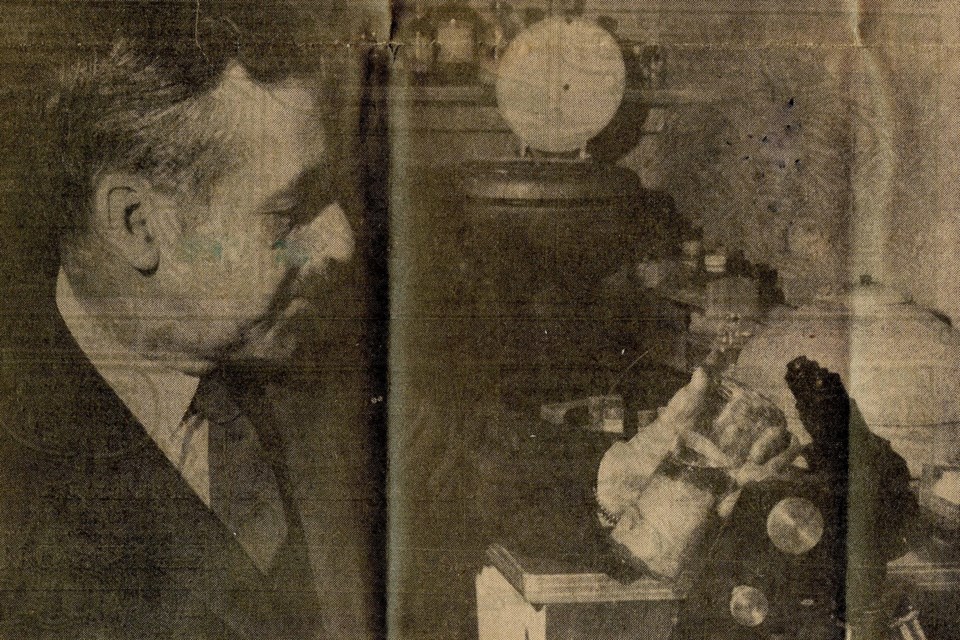Born in Sherbrooke, Quebec in 1912, Jean Pigeon completed his education at Le Petit Seminaire in Quebec before going on to Lavalle University where he received his medical degree at the young age of 24.
He was awarded the Governor General’s Award for the highest total marks achieved by a Canadian medical student. In 1938 he travelled to Blind River and began working as an associate with Dr. Langlois. Pigeon left for six months for post-graduate study in surgery in New York before returning to Blind River to continue his practice.
In his profession, Dr. Pigeon became well known for the development of a treatment for burns. His research was conducted at the St. Joseph’s General Hospital in Blind River.
In his research paper on this topic, he explained that there was a need for burn treatment due to the possibility of a nuclear war. His research involved the use of amniotic membranes (after birth) and applying it to second-degree burn areas and this was determined to be an effective treatment. His research was published in the Canadian Medical Association Journal.
Dr. Pigeon spent a lot of time trying to improve medical practices and procedures and due to a lack of money to fund research, he stressed the importance of financial aid from governments for new research.
He was also an advocate for the regulations of gas appliances used by the general public in order to avoid unnecessary deaths due to carbon monoxide poisoning.
As a coroner and doctor, he often had to treat people, particularly campers who had suffered from carbon monoxide poisoning while in their trailers or small homes.
“In my opinion, it is dangerous in such habitations to use them unless products of combustion are directly removed by some duct to the outside,” he said in a 1960 Sault Star article.
His interest in Public Health was recognized by the London Society in 1964. He was outspoken against pollution, particularly the impact of the Elliot Lake uranium mining process.
He stated that mining posed a danger to both human life as well as wildlife. In addition to the London Society recognition, Dr. Pigeon was recognized by the Royal Society of Health and he received the Order of Merit in Ottawa.
In 1966 he was appointed as the Medical Officer of Health for Blind River. In 1970 he gave a lecture on the pharmaceutical benefits of cannabis when authorities wanted to crack down on the substance.
“Doctors, nurses and parents as well as other leaders of society, owe it to themselves to seek the truth rather than to exclude considerations of menacing dangers for the younger generations and attempt to suppress them,” he said.
He explained that decisions should be based on scientific proof when dealing with health policies.
Perhaps one of the more interesting anecdotal pieces about Dr. Pigeon’s life was outside of the medical field.
He submitted a design for the Canadian flag. His proposed design for the flag was described as having a blue border since Canada was virtually surrounded by water.
It incorporated red to represent the courage of Canadians who defended their freedoms and white to represent Canadians’ love for peace. At the centre of the white background was a green maple leaf since it was a symbol of Canada.
Dr. Pigeon explained that credit for the completion of the flag should be given to the Sisters at the St Joseph’s General Hospital who allowed their seamstress, Mrs. J. Anson, to make the flag.
In 1971 Dr. Jean Pigeon passed away at the General Hospital in Ottawa at the age of 58, leaving behind his wife Marguerite and seven children. He was remembered by his community as a man who was liked by all but who also helped advance medical science in Canada.
